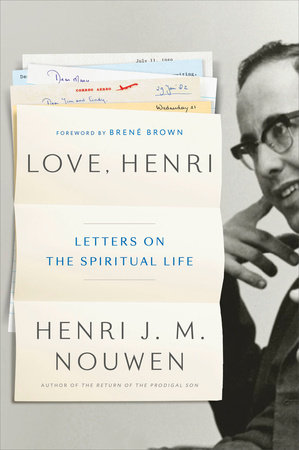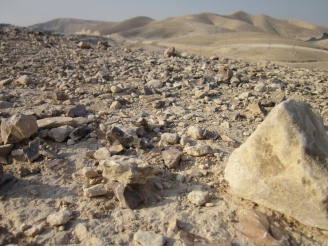“In an emergency situation, putting on your own oxygen mask first allows you to breathe and think clearly enough to help someone else” (April Yamasaki, Four Gifts, Herald Press, 2018, 30).
Far from being ‘selfish,’ appropriate self-care is necessary if we are to become people who flourish and can ably care for those around us. Still, with the demands of life, work, family, ministry, etc., we don’t always take care of ourselves. Furthermore, we wonder what self-care looks like for followers of Jesus called to deny ourselves, take up our cross and follow Him. April Yamasaki describes a holistic approach to self-care in Four Gifts. Utilizing the terms, “heart,” “soul,” “mind” and “strength”—words we most often associate with the love of God in Jesus’s version of the Shema (Mark 12:30). She describes what it means for us to care for total well-being, our spiritual well-being, our mental well-being, and our physical well-being.
 April Yamasaki is an Asian-Canadian Mennonite Pastor, speaker, and author. She is a fellow alumnus of Regent College, in Vancouver, Canada, though our time there did not overlap. I first became aware of her through her blog (www.aprilyamasaki.com) and occasional interactions on my blog and on social media. She is also a member and contributor of the Redbud Writers Guild (a collective of women faith writers online), whose previous book, Everbloom(Paraclete Press, 2017). I reviewed, which Yamasaki contributed to. I’ve known her to be a wise and gracious presence online, and she has encouraged me on my own faith journey.
April Yamasaki is an Asian-Canadian Mennonite Pastor, speaker, and author. She is a fellow alumnus of Regent College, in Vancouver, Canada, though our time there did not overlap. I first became aware of her through her blog (www.aprilyamasaki.com) and occasional interactions on my blog and on social media. She is also a member and contributor of the Redbud Writers Guild (a collective of women faith writers online), whose previous book, Everbloom(Paraclete Press, 2017). I reviewed, which Yamasaki contributed to. I’ve known her to be a wise and gracious presence online, and she has encouraged me on my own faith journey.
Heart, Soul, Mind, and Strength are the organizational motif and so the book divides naturally into these four sections. In the “Heart” section, Yamasaki describes our care for our total well-being. She instructs us to review our core commitments, establish appropriate boundaries, cultivate a community which will sustain us, and invest in relationships. In the “Soul” section she explores what it means to care for our spirits, through devotional practices, Sabbath, lament, and self-discipline. In the “Mind” section she details how to mind our focus, our digital worlds, our mental health, and what it means to renew our mind. In the “Strength” section she surveys ways to care for our physical well-being (e.g. exercise, healthy sleep habits, and good food choices).
This is the sort of book that straddles the line between being a book about spiritual disciplines and being a “self-help” book. My standing critique of both genres is how individualistic their advice often is. However, Yamasaki tempers her personal advice by highlighting the context of community, as part of appropriate self-care. In chapter 3, she uses the story of Jethro’s counsel to Moses and the Early Church’s appointment of deacons to properly care for widows(Exodus 18, Acts 6) to illustrate both our need for other people’s support if we are to thrive, and to illustrate how appropriate self-care means we sometimes need to challenge systems and structures that are destructive of our personhood:
As in the time of Moses and in the early church, we need social and structural change. We may not have the power of Moses to singlehandedly change the system, or the collective power of the twelve apostles to restructure a community. But we need the practical wisdom of Jethro and the openness of Moses to listen. We need the nondefensive posture and the willingness to act that was shown by the early leaders of the church. We need good questions, sustained engagement, ongoing action, and vigorous prayer (54-55).
By including the notion of systemic change in her notion of community, Yamasaki makes self-care as being so much more than self-indulgence but instead sees it as a step toward the work of social change.
Dismantling racism and sexism, ending poverty, and addressing other social ills requires ongoing work, determination, prayer, and yes, self-care. We need self-care that genuinely cares for ourselves and our deepest needs without isolating us from the needs of others. We need self-care that refreshes and validates us for our work in the world without it becoming our permanent destination. We need self-care that can both comfort us when the way is hard and empower us to live with compassion and perseverance (55).
Also, her including space for lament in self-care lends itself to the work of justice in the world beyond ourselves. By attending to the areas of hurt, grief, and brokenness in u,s we can move forward and channel our lament into seeking change. We are motivated to “cry out for justice. Challenge the status quo. Find allies, and consult with professional advisers as needed” (102). This is a refreshing movement in a book about self-care!
But one of the things that I really liked about Yamasaki’s book was the overall graciousness of her tone. A ‘self-help’ book would tell you what you are supposed to do. A self-care book like this one doesn’t prescribe so much as cultivate our awareness of what we need to attend to, to best care for our well-being. Yamasaki offers no hard-and-fast rules. She describes self-care in her introduction:
For me, self-care has been a deep breath and sacred pause, a meandering walk along the waterfront, the New York Times crossword on a Sunday afternoon, a dish of stir-fried rice with greens and almonds after too many days of dairy products have made me feel tired and weighed down.
Self-care means taking all my vacation days even through 43 percent of my fellow working Canadians don’t take all of theirs. It means keeping an off-and-on journal, with page after page of random thoughts, poems, and prayers when the mood strikes—and page after page of blanks when it doesn’t. Self-care as journaling and not-journaling means I’m free to write or doodle or ignore the empty pages at any time. (16).
Yamasaki’s understanding of self-care as being gracious with herself is what hooked me from the start. And she allows space for each of us to appropriate whatever we may need in her discussion of self-care. For example, her chapter on relationships ends with this encouragement, “If working at relationships sounds too busy to be self-care, give yourself permission to take a sacred pause. Rest in the knowledge that God is with you” (67). She also notes that little indulgences (e.g. a Netflix binge, within limits, a night of fast food, comfort food, etc) may be exactly what constitutes self-care. This is not The Seven Habits of the Anal Retentive Soul. This is a book designed to help us care for ourselves in the midst of the demands of life.
And Yamasaki’s life is in these pages. She describes medical and vocational worries in her family life and how she learned to care for herself. I heartedly recommend this book -★★★★★
Notice of material connection: I received a copy of this book from the author and publisher as part of the book launch team, in exchange for my honest review.

 My family moved to the city and we didn’t have horses after that, but I would ride them, some, at the nearby dude ranch, or on my grandparent’s farm in the summertime if they happened to be watching their neighbors’ horses. I love horses. They are majestic creatures, and I’ve since learned to not climb under fences and walk behind them, to respect their size and give them a wide berth.
My family moved to the city and we didn’t have horses after that, but I would ride them, some, at the nearby dude ranch, or on my grandparent’s farm in the summertime if they happened to be watching their neighbors’ horses. I love horses. They are majestic creatures, and I’ve since learned to not climb under fences and walk behind them, to respect their size and give them a wide berth.




 All this is true, but the best news about the wilderness is this: it doesn’t go on forever. Wildernesses are meant to be a stop on the way to somewhere else, . Israel’s forty-year wilderness wandering ended when they crossed the Jordan into the Promised Land; Jesus forty days preceded three years of active ministry, later a cross and a grave gave way to resurrection and glory. A dry, desolate place may be large, it may stretch on for miles in all directions, you may have been here for years, and you may have no sense when this season will end. But dry, desolate places do not encompass all reality. This is a part of the journey, it is no destination.
All this is true, but the best news about the wilderness is this: it doesn’t go on forever. Wildernesses are meant to be a stop on the way to somewhere else, . Israel’s forty-year wilderness wandering ended when they crossed the Jordan into the Promised Land; Jesus forty days preceded three years of active ministry, later a cross and a grave gave way to resurrection and glory. A dry, desolate place may be large, it may stretch on for miles in all directions, you may have been here for years, and you may have no sense when this season will end. But dry, desolate places do not encompass all reality. This is a part of the journey, it is no destination.